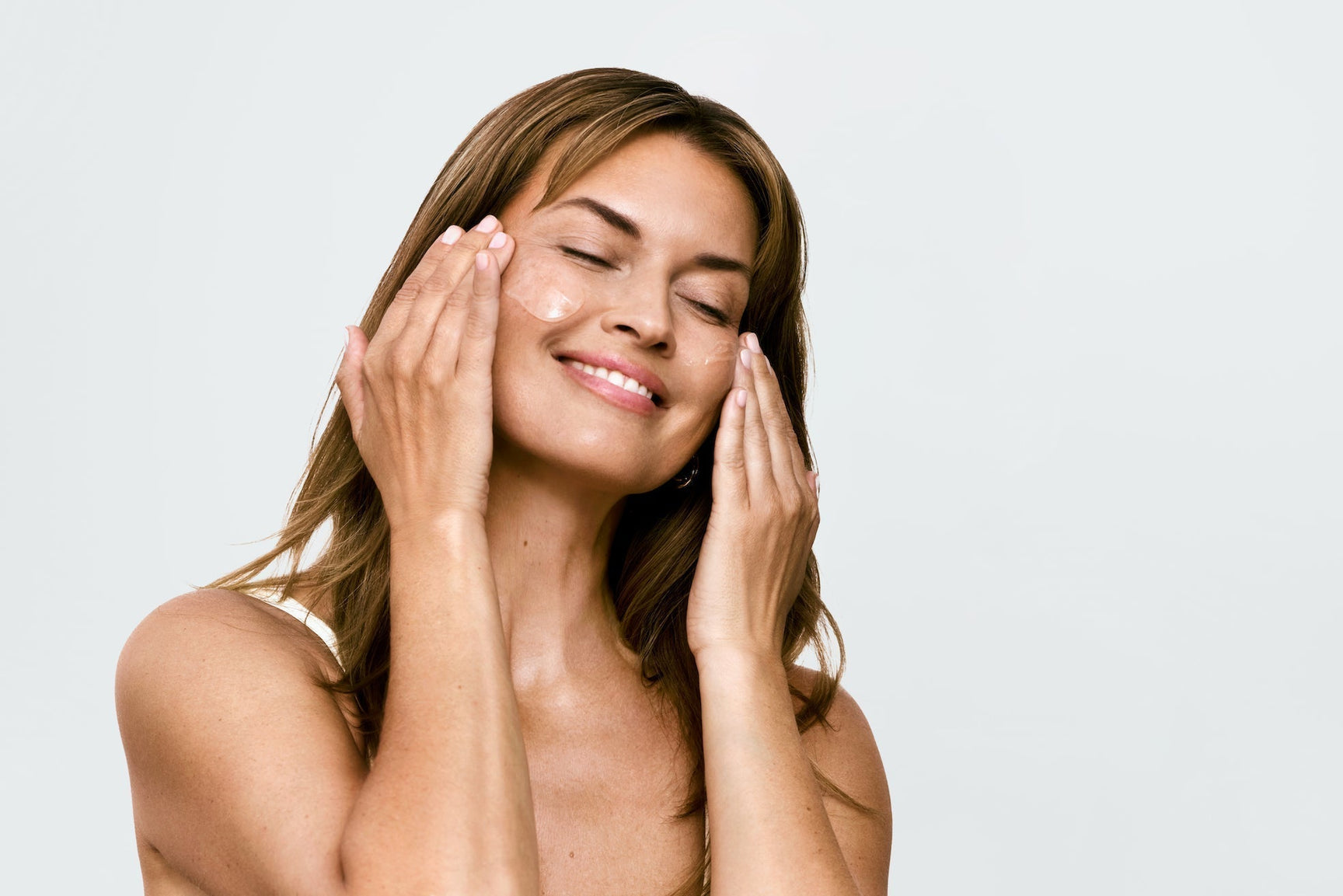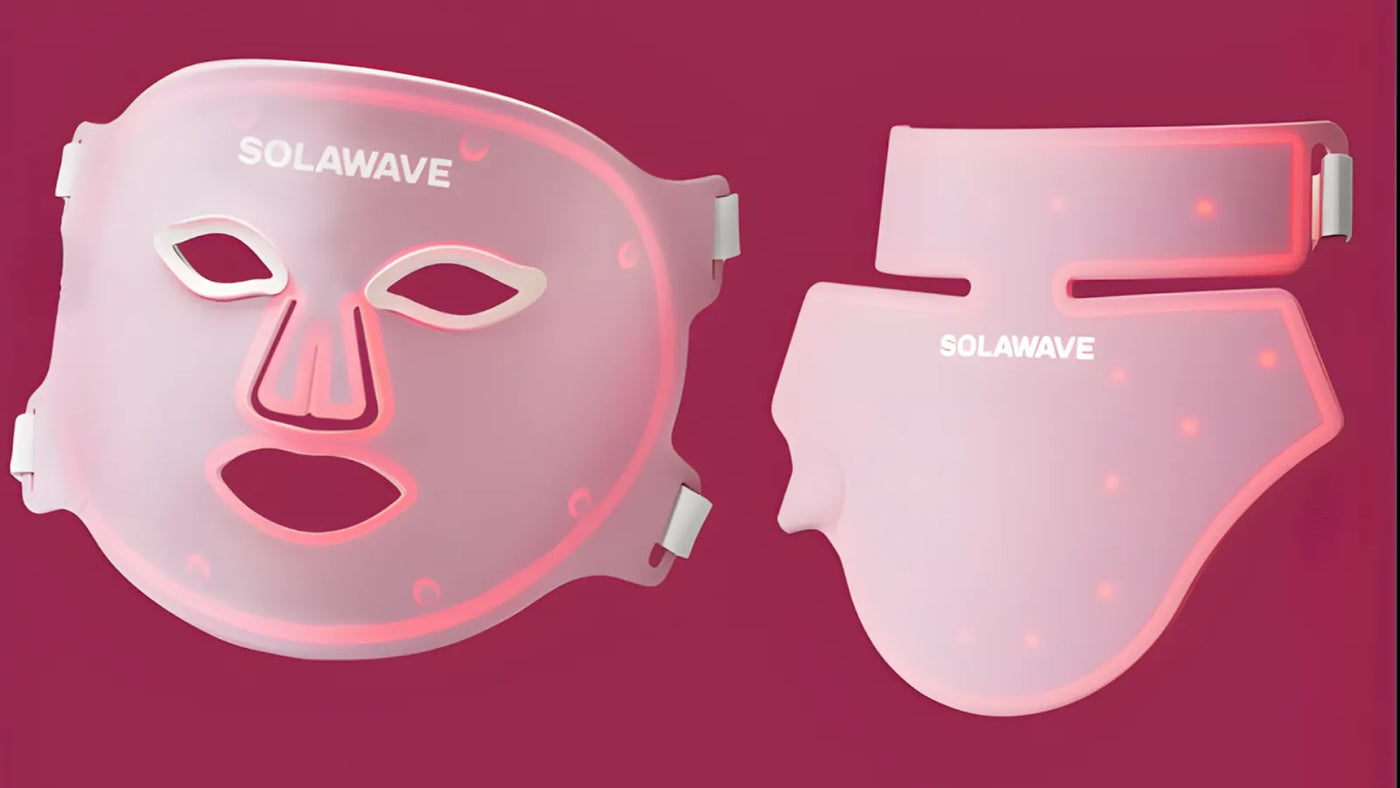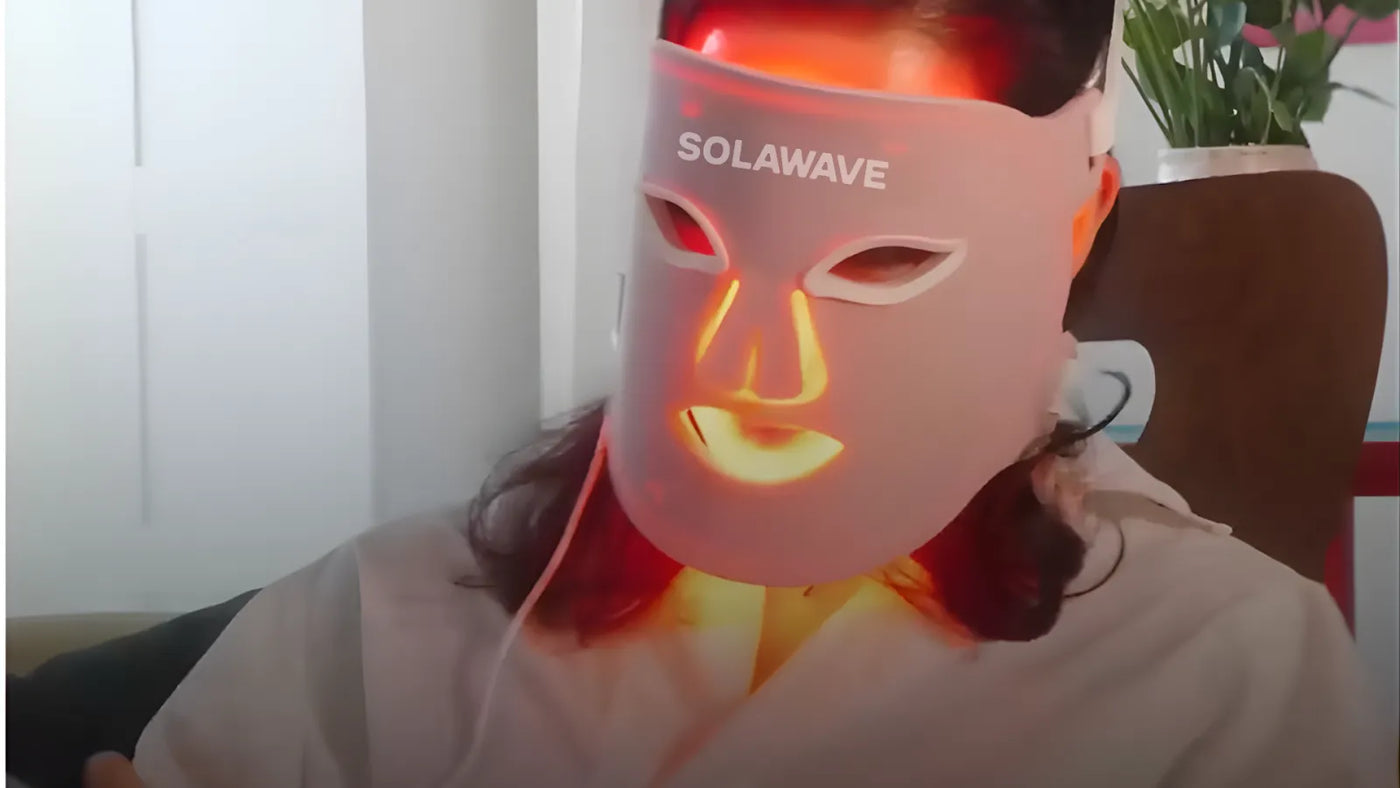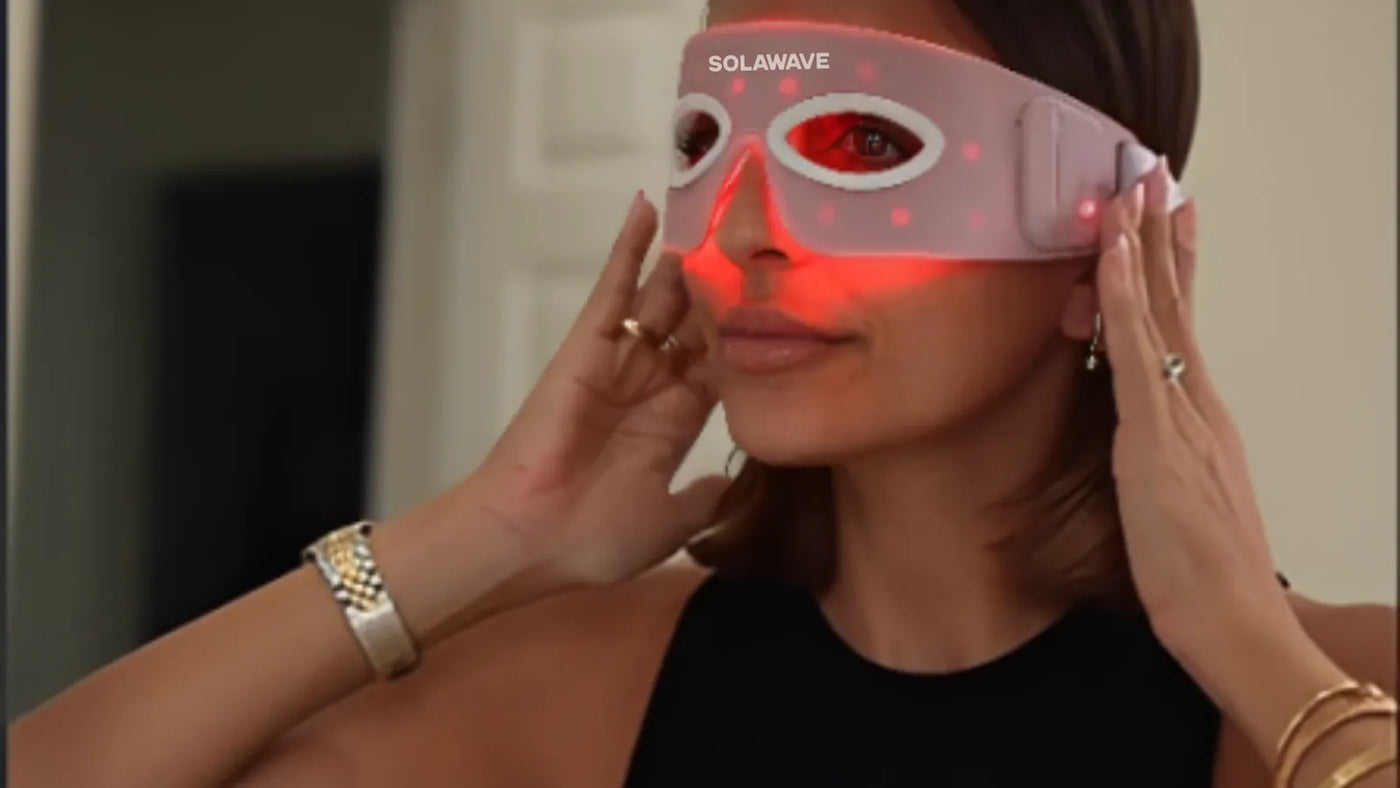

What Is My Face Shape?
Figuring out your face shape can make getting ready a whole lot easier. When you know your face shape, it’s simpler to find hairstyles that suit you, try makeup tricks that really work, and even pick out skincare tools that feel just right. Whether you’re switching up your look or just want to feel more confident, understanding your face shape is a handy first step — here's how to find your face shape.
What Is Face Shape, Anyway?
Your face shape is simply the overall outline and structure of your face when you look straight into the mirror. It’s mostly determined by your bone structure—things like the width of your forehead, the shape of your jawline, and the length of your face from top to bottom. Some faces are more rounded, while others have sharper angles or a longer appearance. The main features that help define your face shape are your forehead, cheekbones, jawline, and the overall length of your face. All these little details come together to create the unique shape that’s just right for you.
The Most Common Face Shapes
When it comes to face shapes, most people fall into one of a few main categories. Here’s a closer look at the most recognized face shapes and what sets them apart:
Oval
An oval face shape is longer than it is wide, with gently rounded edges. Your forehead is usually just a bit wider than your chin, and your jawline is softly curved rather than sharp or angular. If you have an oval face, your cheekbones are often the widest part of your face, and the overall look is balanced and softly contoured.

Key features:
- Forehead slightly wider than chin
- Cheekbones are the widest point
- Jawline is rounded, not pointed or square
- Face length is about one and a half times the width
Round
A round face shape is all about soft curves. Your face is nearly as wide as it is long, with full cheeks and a rounded chin. There aren’t any sharp angles, and your jawline blends smoothly into the rest of your face. If your face looks circular and your cheeks are the standout feature, you likely have a round face.

Key features:
- Face width and length are almost equal
- Full cheeks
- Rounded jawline and chin
- Soft, curved edges all around
Square
A square face shape stands out for its strong, angular lines. Your forehead, cheekbones, and jawline are almost the same width, and your jaw is more pronounced and squared off. If your face has a bold, structured look with a flat chin and straight sides, you probably have a square face.

Key features:
- Forehead, cheekbones, and jawline are similar in width
- Strong, square jawline
- Straight sides of the face
- Minimal curves
Heart
A heart-shaped face is widest at the forehead and gently narrows down to a pointed chin. Your cheekbones are prominent, and you might have a widow’s peak (a V-shaped point at your hairline). The lower half of your face is more delicate, giving your face a sweet, heart-like appearance.

Key features:
- Forehead is the widest part
- Cheekbones are high and noticeable
- Face tapers to a narrow, pointed chin
- Sometimes a widow’s peak at the hairline
Diamond
A diamond face shape is defined by wide, high cheekbones and a narrower forehead and chin. Your face is slightly longer than it is wide, and the cheekbones are the standout feature. If your face has dramatic angles and your cheekbones are the widest point, you likely have a diamond face.

Key features:
- Cheekbones are the widest part
- Forehead and jawline are narrower
- Chin is slightly pointed
- Face length is a bit longer than the width
Rectangle (or Oblong)
A rectangle or oblong face shape is longer than it is wide, with straight sides and a squared-off jawline. Your forehead, cheekbones, and jawline are about the same width, but your face has more length than a square face. If your face looks long and has a strong jaw, you probably fit this shape.

Key features:
- Face is noticeably longer than it is wide
- Forehead, cheekbones, and jawline are similar in width
- Jawline is more square than rounded
- Straight sides with minimal curves
Visualizing your face shape can be as simple as tracing the outline of your face in the mirror with a washable marker or using a photo to compare your features to these descriptions. Each face shape is beautiful in its own way, and knowing yours can help you make choices that feel just right for you.
What Is My Face Shape? Step-by-Step to Determine Your Face Shape
Figuring out your face shape is easier than you might think—all you need is a mirror, a flexible tape measure, and a few minutes. Here’s a simple step-by-step guide to help you get started:
Step 1: Gather Your Tools
Find a well-lit mirror and grab a flexible tape measure (the kind used for sewing works best). If you don’t have one, a piece of string and a ruler will do the trick.
Step 2: Pull Your Hair Back
To get the most accurate measurements, pull your hair away from your face. Use a headband or hair tie so you can clearly see your hairline and jawline.
Step 3: Measure Your Forehead
Place the tape measure across the widest part of your forehead, usually about halfway between your eyebrows and your hairline. Write down this number.
Step 4: Measure Your Cheekbones
Find the highest points of your cheekbones, just below the outer corners of your eyes. Measure straight across your face from one cheekbone to the other and note the measurement.
Step 5: Measure Your Jawline
Start at the tip of your chin and measure up along the edge of your jaw to just below your ear. Double this number to get your full jawline measurement.
Step 6: Measure Your Face Length
Measure from the center of your hairline straight down to the tip of your chin. This is your face length.
Step 7: Compare Your Measurements
Now, look at your numbers and see which features stand out. Here’s how to match your measurements to typical face shapes:
-
Oval: Face length is about one and a half times the width; forehead is slightly wider than jawline.
-
Round: Face length and width are very similar; cheeks are the widest part.
-
Square: All measurements are fairly equal; jawline is strong and angular.
-
Heart: Forehead is the widest; face narrows to a pointed chin.
-
Diamond: Cheekbones are the widest; forehead and jawline are narrower.
-
Rectangle/Oblong: Face is noticeably longer than it is wide; forehead, cheekbones, and jawline are similar in width.
If you’re still unsure, try tracing the outline of your face on the mirror with a washable marker or compare a photo of yourself to face shape diagrams online. Remember, most people don’t fit perfectly into one category, so look for the shape that matches your features the closest.
Why Face Shape Matters for Your Beauty Routine
Your face shape can make a big difference in how certain styles and techniques look on you. When you know your face shape, it’s easier to pick out hairstyles, eyebrow shapes, glasses, and makeup tricks that highlight your natural features.
Here are some of the most popular tips and best practices for each face shape:
Oval
-
Hairstyle Choices: Almost any style works well, but soft waves, layers, and shoulder-length cuts are especially flattering.
-
Eyebrow Shaping: Softly arched brows help maintain balance.
-
Glasses Selection: Most frame shapes suit you, but square or rectangular frames add definition.
-
Makeup Techniques: Light contouring along the cheekbones and jawline enhances your natural symmetry.
Round
-
Hairstyle Choices: Long layers, side parts, and styles with height at the crown help elongate your face.
-
Eyebrow Shaping: High, defined arches add length and structure.
-
Glasses Selection: Angular frames, like rectangular or cat-eye, create contrast and definition.
-
Makeup Techniques: Contour along the sides of your face and under your cheekbones to add angles; apply blush slightly higher on the cheeks.
Square
-
Hairstyle Choices: Soft, layered cuts and waves help soften strong angles; side-swept bangs are also flattering.
-
Eyebrow Shaping: Gently curved brows balance the angular jawline.
-
Glasses Selection: Round or oval frames soften your features.
-
Makeup Techniques: Contour along the jawline and temples to soften edges; focus blush on the apples of your cheeks.
Heart
-
Hairstyle Choices: Chin-length bobs, side-swept bangs, and waves add fullness around the jaw and balance a wider forehead.
-
Eyebrow Shaping: Rounded brows with a gentle arch soften the forehead.
-
Glasses Selection: Frames that are wider at the bottom, like aviators, balance your face.
-
Makeup Techniques: Contour the sides of your forehead and highlight your chin; blush applied just below the cheekbones adds balance.
Diamond
-
Hairstyle Choices: Styles that add width at the forehead and chin, like chin-length bobs or layered cuts, work well.
-
Eyebrow Shaping: Curved brows help soften the angles of your face.
-
Glasses Selection: Oval or rimless frames complement your cheekbones.
-
Makeup Techniques: Highlight your forehead and chin, contour under your cheekbones, and apply blush on the tops of your cheeks.
Rectangle (Oblong)
-
Hairstyle Choices: Soft waves, curls, and shoulder-length cuts add width and balance out face length; avoid styles that add height.
-
Eyebrow Shaping: Flat, straight brows help shorten the appearance of your face.
-
Glasses Selection: Oversized or decorative frames add width and draw attention to your eyes.
-
Makeup Techniques: Contour along the top of your forehead and bottom of your chin to visually shorten the face; blush applied to the apples of your cheeks adds fullness.
Conclusion
No matter which face shape you have, it’s uniquely yours and worth celebrating. Let your face shape guide you as you try new hairstyles, makeup looks, and self-care routines that make you feel your best.
The best part? Our at-home Red Light Therapy devices are made to fit comfortably on any face shape! You can explore our top Light Therapy devices here, or if you're looking for more beauty blogs, you can check out our other helpful guides here.
Sources:






















